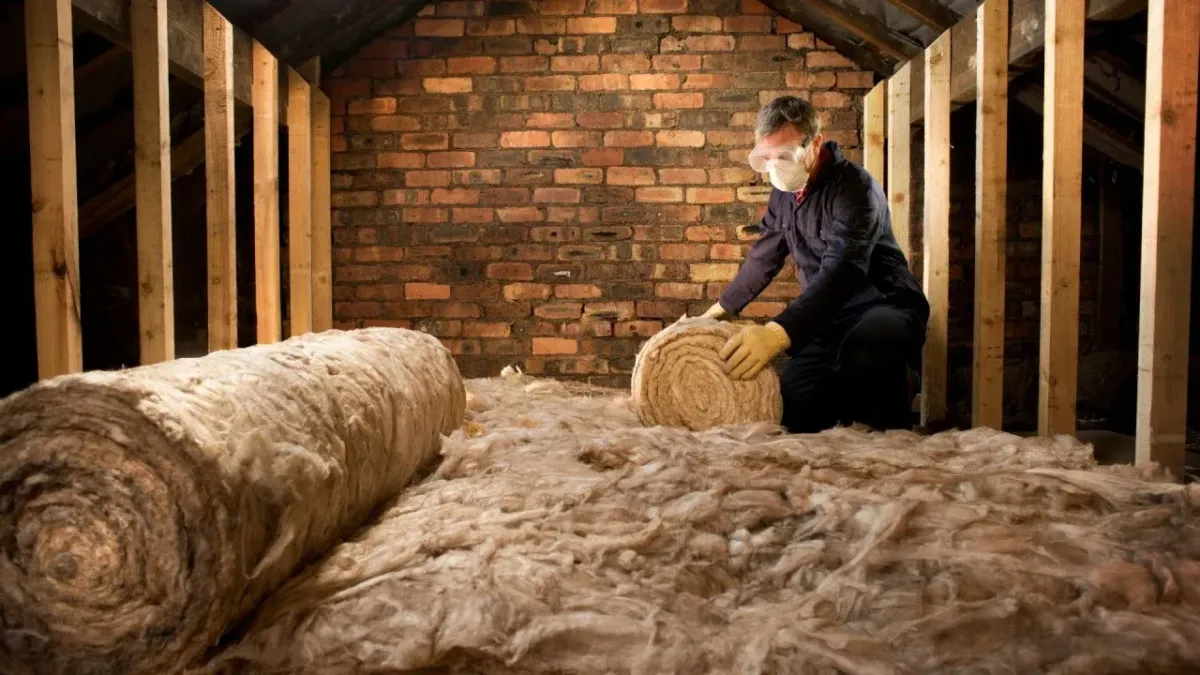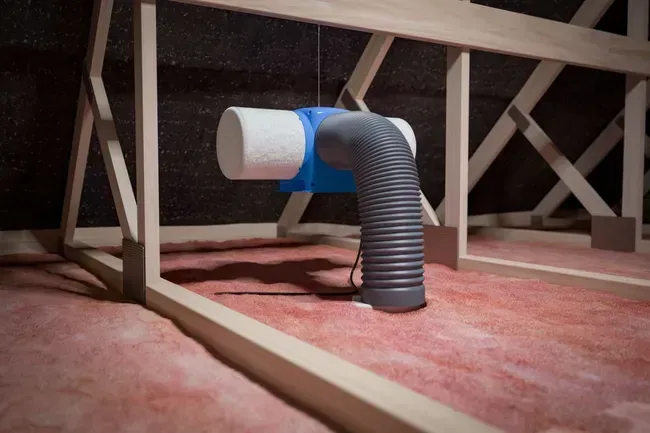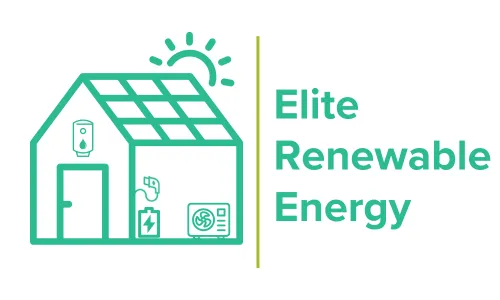Insulation and Ventilation
Breathe Easy with Efficient Mechanical Ventilation Systems
& Effective Insulation Solutions
Insulation and Ventilation
Breathe Easy with Efficient Mechanical Ventilation Systems
& Effective Insulation Solutions
Benefits of Mechanical Ventilation

Improved Air Quality

Recycles Heat to Lower Your Bills

Maintain Consistent Temperatures


Why Your Home Needs Insulation
and Effective Ventilation
Ensuring your home is well insulated is crucial for both comfort and energy efficiency. Proper insulation helps regulate your home’s temperature, keeping it warmer in winter and cooler in summer. This has numerous benefits:
Reduced Heating and Cooling Costs: Good insulation helps to retain the heat generated by your heating system in winter and prevents heat from entering in summer. As a result, your home requires less energy to maintain a comfortable temperature, reducing your heating bills and your overall carbon footprint.
Energy Efficiency: Insulation minimises energy loss, ensuring that the energy you use for heating and cooling stays within your home. This makes your home more energy-efficient and contributes to a greener environment by reducing the demand for fossil fuels used to generate electricity or gas.
Comfort: Insulation creates a more stable indoor climate, preventing cold spots, draughts, and fluctuations in temperature, improving comfort and well-being.
Noise Reduction: Insulation also helps reduce external noise, such as traffic or neighbour sounds, creating a quieter and more peaceful home environment.
Increased Property Value: Homes with good insulation and energy efficiency are generally more attractive to potential buyers, increasing your home’s value and market appeal.
Indoor Air Quality Problems When Building Fabric Cannot "Breathe" Properly
While insulation plays a vital role in energy efficiency and comfort, airtight homes—those that are very well insulated but lack proper ventilation—can encounter significant indoor air quality (IAQ) issues. Here’s why:
Stale Air: Without sufficient ventilation, fresh air cannot replace the stale, moisture-laden air inside your home. This results in a buildup of indoor air pollutants, such as carbon dioxide (CO2), volatile organic compounds (VOCs) from paints and furniture, cooking fumes, and cleaning chemicals. Poor indoor air quality can contribute to respiratory problems, fatigue, headaches, and overall discomfort.
Condensation and Dampness: As your home becomes more airtight, moisture generated from everyday activities like cooking, showering, and breathing has nowhere to escape. This leads to condensation on cold surfaces (windows, walls, and ceilings), which, over time, can cause damp and mould growth. Mould spores can exacerbate allergies, asthma, and other respiratory issues, as well as damage the structure of the property.
Health Risks: The buildup of moisture and pollutants in a poorly ventilated, tightly insulated home can lead to the development of mould and dust mites, both of which can trigger allergies and other health issues. Additionally, elevated levels of CO2 and VOCs can affect cognitive function and contribute to feelings of lethargy.
Why Mechanical Ventilation is Essential for Well-Insulated Homes
Well-insulated homes, while energy-efficient, can suffer from inadequate airflow unless mechanical ventilation systems are in place. Without a reliable ventilation solution, airtight homes will trap moisture and stale air, creating an unhealthy and uncomfortable living environment. The solution is to integrate a Mechanical Ventilation System to ensure a constant flow of fresh air while maintaining energy efficiency. The right system will balance good ventilation with the high levels of insulation.
Which Mechanical Ventilation System to Choose
There are various types of mechanical ventilation systems but for a modern, well-insulated home, the two most suitable systems are:
1. Mechanical Ventilation with Heat Recovery (MVHR)
How it Works: MVHR systems are designed to continuously supply fresh air into the home while extracting stale air. The system uses a heat exchanger to transfer heat from the outgoing stale air to the incoming fresh air. This means that you can ventilate your home without losing the heat you’ve spent energy to create. MVHR works by running air through ducts that circulate throughout the home, typically in rooms like bathrooms, kitchens, and bedrooms.
Benefits
Energy Efficiency: MVHR systems are energy-efficient because they recycle the heat from the air being extracted, reducing the need to heat up fresh air from outside. This can reduce heating bills by up to 30%. Improved Air Quality: By ensuring a constant flow of fresh air, MVHR systems can significantly improve indoor air quality by removing pollutants, moisture, and CO2.
Preventing Damp and Mould: The removal of moisture from the home reduces the risk of condensation and damp, which can otherwise lead to mould and mildew growth.
Quiet Operation: MVHR systems are typically very quiet, especially compared to open windows or extractor fans. Ideal for: Homes that are highly insulated or airtight, particularly where damp and indoor air quality issues are common.
2. Positive Input Ventilation (PIV)
How it Works: PIV systems work by drawing fresh air into your home from the loft (or a similar space) and gently pushing it throughout the house. The system works on the principle of creating a slight positive pressure within the home, which forces air to exit through vents, windows, and other gaps, ensuring the home remains ventilated.
Benefits
Simple and Cost-Effective: PIV systems are typically easier to install than MVHR systems and often come at a lower upfront cost. They are particularly effective in older properties or homes where full ducting for an MVHR system would be difficult.
Improved Air Quality: Like MVHR, PIV helps to dilute and expel indoor pollutants, ensuring better air quality. Preventing Damp and Mould: By keeping the internal air pressure slightly positive, PIV helps to reduce condensation and prevent dampness and mould buildup. Ideal for: Homes that have less severe air-tightness but still require improved ventilation.
The problems with poorly installed or unsuitable spray foam loft insulation in UK Homes
Spray foam insulation has become a popular choice for insulating homes in the UK, especially in loft spaces. When properly installed, it can provide excellent thermal performance, reduce heat loss, and prevent draughts. However, when the insulation is poorly fitted or unsuitable for the property, it can cause a range of problems. These issues are often not immediately apparent but can lead to serious consequences for the building’s fabric, air quality, and energy efficiency.
The key reasons why homes may face problems with spray foam loft insulation
1. Trapping Moisture and Causing Dampness
Spray foam insulation works by expanding to fill gaps and cracks, which can be highly effective at sealing the loft. However, in some cases, it can trap moisture
that is naturally present in the loft space, leading to dampness and condensation. The key issues include:
Condensation Build-Up: Spray foam can create a sealed environment, preventing air from circulating. Without proper ventilation, moisture from activities within the home (like cooking and showering) can accumulate in the loft. This trapped moisture can lead to condensation on cold surfaces, fostering damp conditions.
Mould Growth: Moisture trapped in poorly ventilated lofts can lead to the growth of mould and mildew, both of which can affect the structure of the property and lead to serious health issues like respiratory problems and allergies.
Rotting Timber: Excess moisture within the loft can affect the timber structure of the roof. If spray foam insulation is applied without proper attention to ventilation, it can trap moisture around wooden beams, leading to wood rot and compromising the structural integrity of the roof.
2. Inadequate Ventilation
Ventilation is critical when insulating a loft. In some cases, spray foam insulation can block essential ventilation pathways, such as soffit vent, ridge vents, or air bricks. These vents are designed to allow air to circulate within the loft, preventing excess moisture and maintaining the health of the building. Without proper ventilation, moisture cannot escape, leading to:
Increased Humidity: Lack of airflow can cause humidity levels to rise within the loft, which exacerbates issues like condensation, mould, and the potential for timber decay.
Energy Inefficiency: Without adequate ventilation, trapped heat can also increase the internal temperature of the loft, making the house less energy-efficient. This results in a higher demand on heating systems and higher energy bills.
3. Incorrect Type of Spray Foam
There are two main types of spray foam insulation: open-cell and closed-cell. Each type is suited to different conditions, and applying the wrong type of foam for the specific loft space can lead to problems:
Open-Cell Foam: This is less dense and more permeable. While it is an effective thermal insulator, it can absorb moisture over time and is not suitable for areas exposed to high humidity, like lofts with inadequate ventilation.
Closed-Cell Foam: This is more resistant to moisture absorption, making it more suitable for lofts and other areas with high moisture levels. However, it is more expensive and can be overkill for a space that doesn’t require such a high-performance insulation.
If the wrong type of spray foam is used in a loft, it may not perform as expected, leading to issues with heat retention, condensation, and moisture management.
4. Incompatibility with Existing Roof Space
Spray foam insulation may not be compatible with all types of roofs or existing building structures. For example, older properties with traditional roofing methods may have a different design or ventilation needs compared to modern buildings. If the roof space is not adequately prepared, or if the spray foam is applied incorrectly, it can cause several issues:
Blocking Roof Vents: If spray foam is applied too thickly or in areas where ventilation is needed (e.g., along the soffits), it can block essential airflow, leading to moisture build-up and further ventilation problems.
Inability to Detect Problems: In some cases, spray foam can cover up existing issues such as leaks, damaged roof tiles, or structural weaknesses. The foam might hide these problems from view, making them more difficult to detect and address.
Difficulty in Future Maintenance: If spray foam is applied too extensively, it can make future roof maintenance, repairs, or inspections more difficult. For example, replacing damaged tiles or fixing leaks can become more challenging when spray foam is applied over them.
5. Poor Installation Practices
A common problem with spray foam insulation is poor installation. Inexperienced or unqualified installers may apply the foam too thickly or unevenly, which can lead to a range of issues:
Uneven Insulation: Poor application can result in areas of the loft being over-insulated while others are under-insulated. This uneven application can cause heat loss in certain parts of the house, negating the energy efficiency benefits of the spray foam.
Voids and Gaps: If the foam is not applied correctly, gaps or voids can form between the foam and the surface it is meant to insulate. These gaps can lead to heat loss and the accumulation of moisture in the voids.
Incorrect Curing: If spray foam is not allowed to cure properly, it can remain tacky or uneven, reducing its insulating properties and lifespan.
6. Potential for Off-Gassing and Health Concerns
Some spray foam products can release volatile organic compounds (VOCs) as they cure, which can affect indoor air quality. These fumes can be harmful to health, especially during the installation process if proper ventilation and safety precautions are not followed. Some people may also experience sensitivities to these chemicals, leading to symptoms like headaches, dizziness, or respiratory issues.
7. Increased Risk of Fire
Certain spray foam products, particularly low-quality ones, may have a higher flammability risk compared to other insulation types. If improperly applied, the foam can increase the risk of fire in the home, especially in areas where high temperatures are common or where electrical systems are present. It is essential to ensure that spray foam used is certified as fire-resistant or fire-retardant for added safety.
The Importance of Proper Spray Foam Installation
While spray foam insulation can offer excellent energy efficiency and thermal performance when properly installed, many homes are facing problems due to poorly fitted or unsuitable spray foam loft insulation. Common issues include trapping moisture, inadequate ventilation, and poor installation practices, all of which can lead to serious problems such as damp, mould, structural damage, and compromised air quality. To avoid these issues, homeowners should ensure that spray foam insulation is installed by qualified professionals with experience in assessing the specific needs of their property. It’s also important to choose the right type of foam for the specific conditions of the loft and to ensure that adequate ventilation is maintained throughout the installation process. If you are considering spray foam insulation for your home, make sure to seek advice from an experienced professional and ensure the insulation is appropriate for your property’s age, structure, and ventilation needs. Properly installed and suited spray foam can provide long-term energy
savings, but improper application can lead to costly and disruptive problems down the line.
To make the most of your home’s insulation and create a comfortable, healthy living environment, it is essential to integrate a mechanical ventilation system. Without the right ventilation, even the best-insulated home can suffer from poor air quality, condensation, and the risks associated with mould and damp. An MVHR system is often the best choice for modern, energy-efficient homes as it ensures continuous airflow and recycles heat, saving energy and improving indoor air quality. For homes where a more basic system is sufficient, PIV is a simpler, cost-effective alternative that still promotes healthy air circulation.
// WORKING PROCESS
Our 4 Step Solution
01...
Get In Touch:
Simply call us or complete the contact form above. We love to chat and happy to discuss your ideas informally over the phone if you don't need a survey.
02...
Survey Carried Out:
If you really want to get under the skin of your project we need to visit. Our friendly and knowledgeable surveyors will provide all the answers on the day and will send you a written report with our conclusions. We like tea or coffee and a biscuit or two is even better.
03...
Quote:
Our quotation will provide all the information that you need on the systems that we are proposing. Giving you the data on the performance you can expect, the likely return on your investment and the cost of the solution. This will provide you with all you need to decide on the economic viability of the investment and the benefits it will provide.
04...
Installation & Aftercare:
Once you have accepted our quotation we will book the work in with you and carefully plan your installation. When we have carried out the work, our ongoing support and maintenance services will give you the utmost peace of mind and reassurance that you have made a sound investment.
Servicing Dorset, Hampshire and Wiltshire
Our Work
Contact us today
Copyright 2024 Elite Renewables - all rights reserved
Elite Renewables is a trading name of Elite Renewable Energy Ltd
Elite Renewable Energy Ltd is registered as a limited company in England & Wales under company number 16090413 Registered Address: Tudor Lodge, 22 Chewton Farm Road, Highcliffe, BH23 5QN
